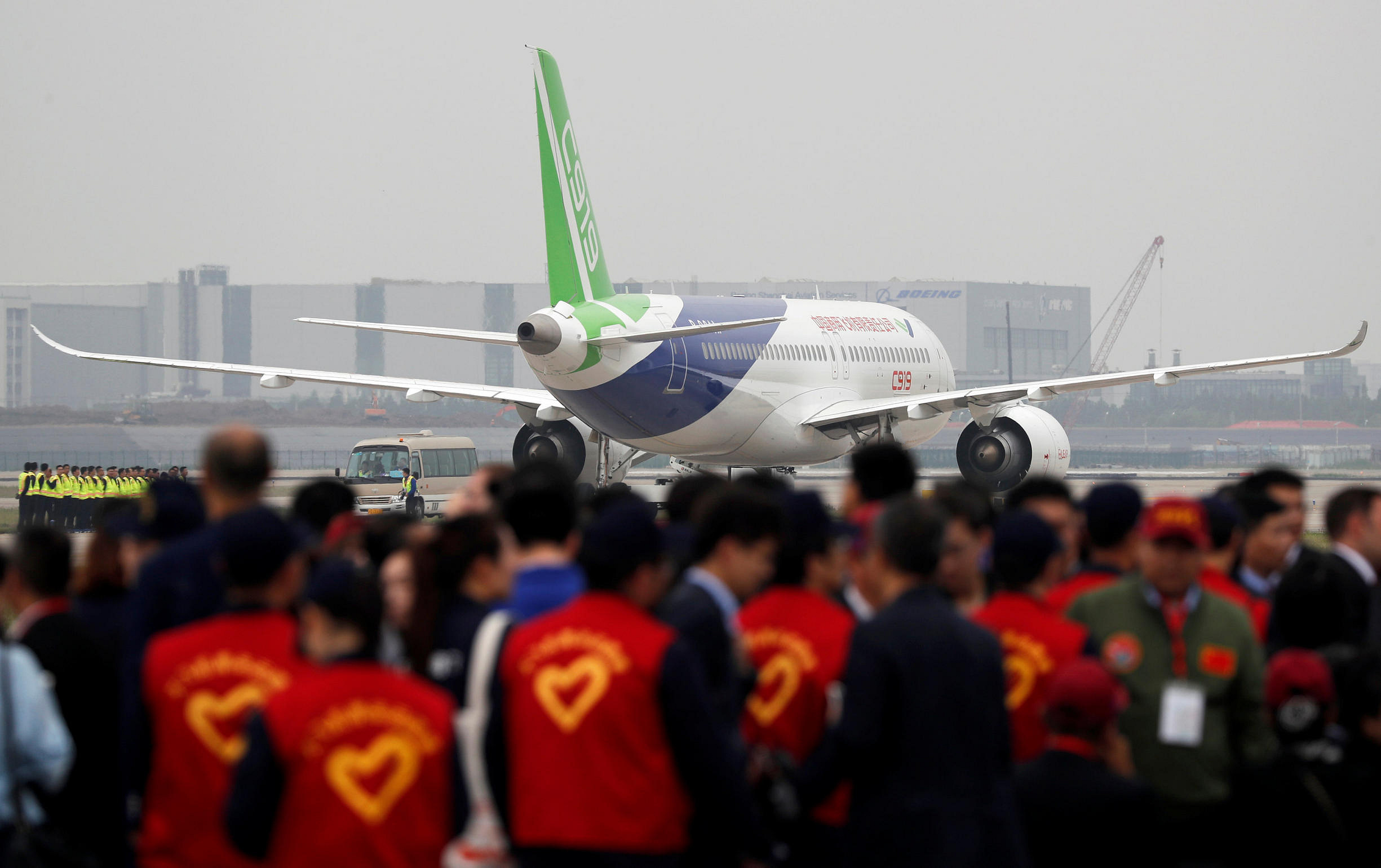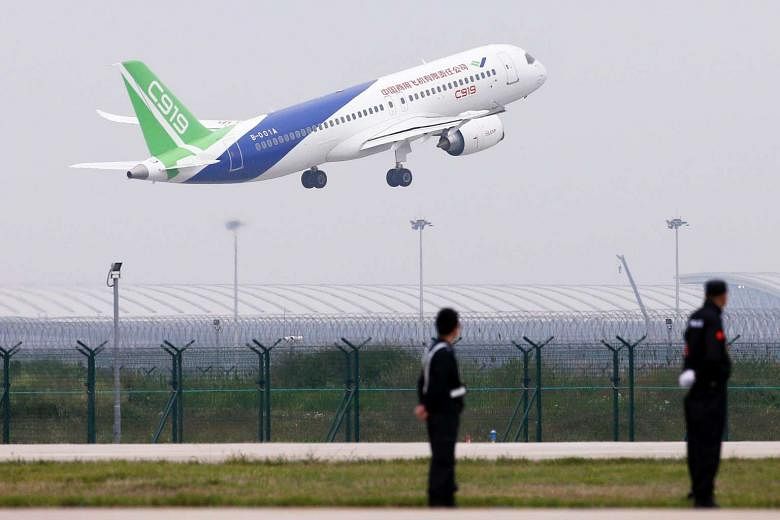SHANGHAI (REUTERS) - China's home-grown C919 passenger jet took to the skies on its long-delayed maiden flight on Friday (May 9), a major step for Beijing as it looks to raise its profile in the global aviation market and boost high-tech manufacturing at home.
The white, green and blue aircraft, with "C919" emblazoned on its tail, sped along the tarmac at Shanghai's international airport and lifted off under overcast skies in front of thousands of dignitaries, aviation workers and enthusiasts.
The narrow-body jet, which will compete with Boeing's 737 and the Airbus A320, soon disappeared into the clouds carrying its skeleton crew of five pilots and engineers. State broadcaster CCTV sent out live footage from the plane, which had no passenger seats installed for the maiden flight.
The jet is a symbol of China's ambitions to muscle into a global jet market estimated to be worth US$2 trillion (S$2.8 trillion) over the next two decades, as well as Beijing's broader "Made in China 2025" plan to spur home-made products, from medicines to robots.
"The significance is huge, it's the first ever large-frame aircraft made in China," Xiong Yuexi, a plane design expert at Beihang University in Beijing said ahead of the launch. "It has a great impact for the Chinese people and the domestic market."

State television reported the plane's test flight would last one-and-a-half hours at a height of around 3,000m and at a speeds of 290-300km per hour. According to aircraft tracker Flightradar24, the plane flew over the Yangtze River estuary and headed due north.
The C919, made by state-owned Commercial Aircraft Corporation of China (COMAC), has seen its test flight pushed back at least twice since 2014 due to production issues, underlining the scale of the task facing Beijing.
China first gave the world a glimpse of the plane, which will be able to carry 158-168 passengers, in November 2015 when it rolled it out at a ceremony in Shanghai.
Analysts, however, say the C919 will lag technologically behind improved versions of the A320 and 737 which will enter service in the next two years. China Eastern Airlines is the launch customer for the plane, which COMAC says has 570 orders from 23 customers.
The plane also relies on an array of overseas technology, with CFM International, a joint venture between General Electric's aerospace arm and a unit of French firm Safran supplying the engines.
Others include Honeywell International Inc, United Technologies Corp subsidiary Goodrich, Rockwell Collins Inc and a unit of Parker-Hannifin Corp.

JUST THE START
Conceived in 2008, China wants the C919 to eventually take market share from Boeing and Airbus in the lucrative narrow-body market which accounts for more than 50 per cent of the aircraft in service worldwide.
However, the jet likely faces a lengthy journey from first flight to commercial usage.
China's first home-made jet, the regional ARJ-21, received its type certification in December 2014, six years after its first flight and more than 12 years after it was conceived. It made its maiden passenger flight in June last year.
Then there is also the daunting task of selling the jet in a global market dominated by Boeing and Airbus.
"Aviation is a complex market and you need experience over a long time. Boeing has 100 years, Airbus has over 40 years," said Sinolink Securities analyst Si Jingzhe, adding COMAC still lagged far behind in terms of supply chain know-how.
China is pushing for recognition globally of its certification by European and US regulators. Without their certification, China would only be able to sell the jet to a handful of countries that accept its certification standards.
Beijing is also already looking beyond the C919, with plans to develop a wide-body long-haul jet with Russia. In November COMAC and its partner United Aircraft Corp said they have started the hunt to find suppliers.

